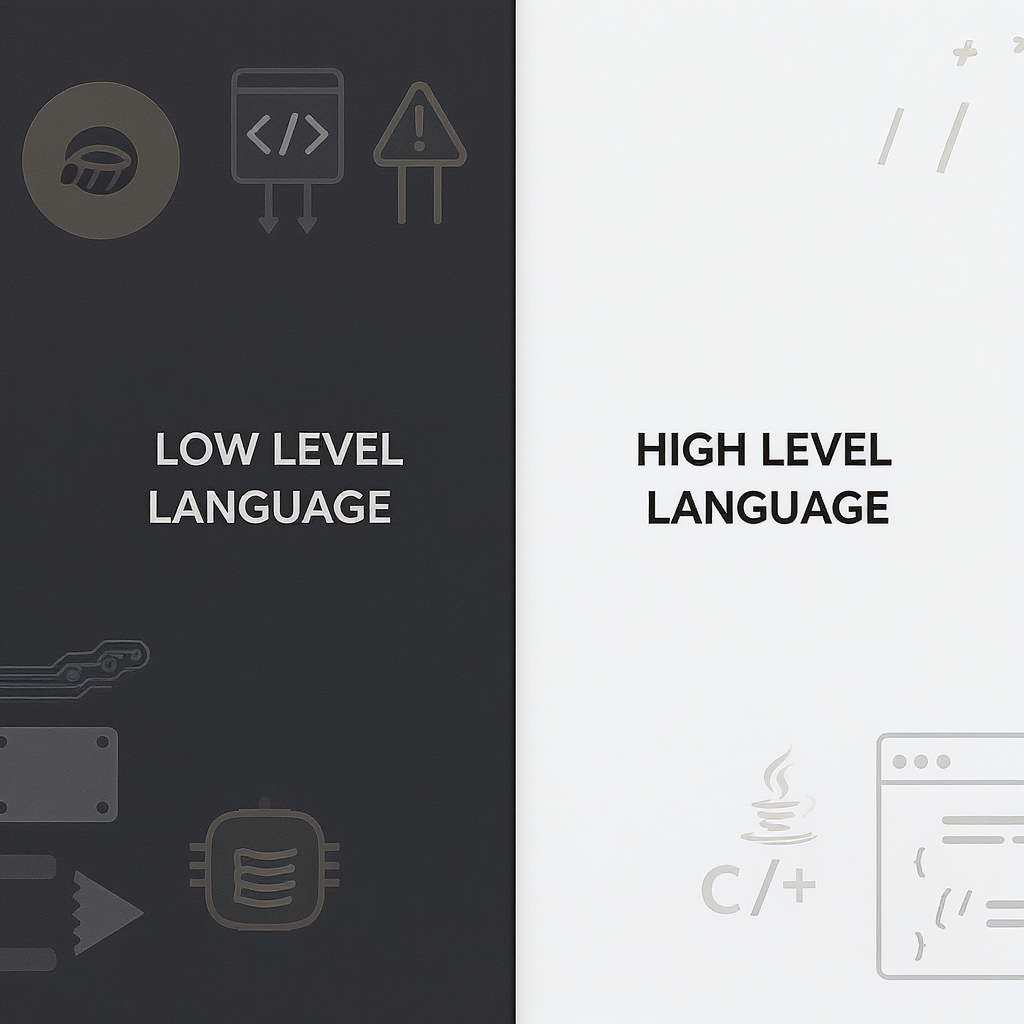Low and High Level Languages
When we write programs, we are essentially communicating with computers to make them perform specific tasks. But computers don’t understand human languages—they only understand instructions in a very basic form. This is where programming languages come in.
In programming, languages are generally divided into two main types:
Low-Level Languages
Low-level languages are close to machine (hardware) language. They are hard for humans to read but easy for computers to understand.
Types of Low-Level Languages:
1. Machine Language (Binary Code)
- Machine language is the most basic language that a computer understands. It consists of only binary digits (0 and 1), known as bits. Every instruction is given directly in this form to control the computer's hardware.
- In machine language, the instructions are already in the form (0s and 1s) that the computer understands. So, the computer does not need any special tool or software to change or translate the code. It can start working on the instructions immediately.
- Very difficult for humans to read or write.
- Hardware-dependent (specific to each type of CPU).
2. Assembly Language
- Assembly language is a slightly higher level than machine language.
- It uses short words called mnemonics (like MOV, ADD, SUB) instead of 0s and 1s, making it easier for humans to write.
- However, computers cannot understand assembly language directly. An assembler is used to convert it into machine language.
- Easier to write compared to binary.
- Still hardware-specific.
Example:
Imagine telling the computer to add 5 and 3:
Machine Language: (just 0s and 1s)
00000101 00000011
Assembly Language:
MOV A, 5 (store 5 in A)
ADD A, 3 (add 3 to A)
High-Level Languages
High-level languages are close to human languages (English-like). They are easier to write, read, and understand.
Examples of High-Level Languages:
- Python
- C
- Java
- C++
- JavaScript
Example:
Adding 5 and 3
In Python:
a = 5
b = 3
sum = a + b
print(sum)
In C:
include
int main()
{
int a = 5, b = 3;
int sum = a + b;
printf("%d", sum);
return 0;
}
Understanding the difference between low-level and high-level languages is essential for beginners who are starting their programming journey.

Comments
Post a Comment